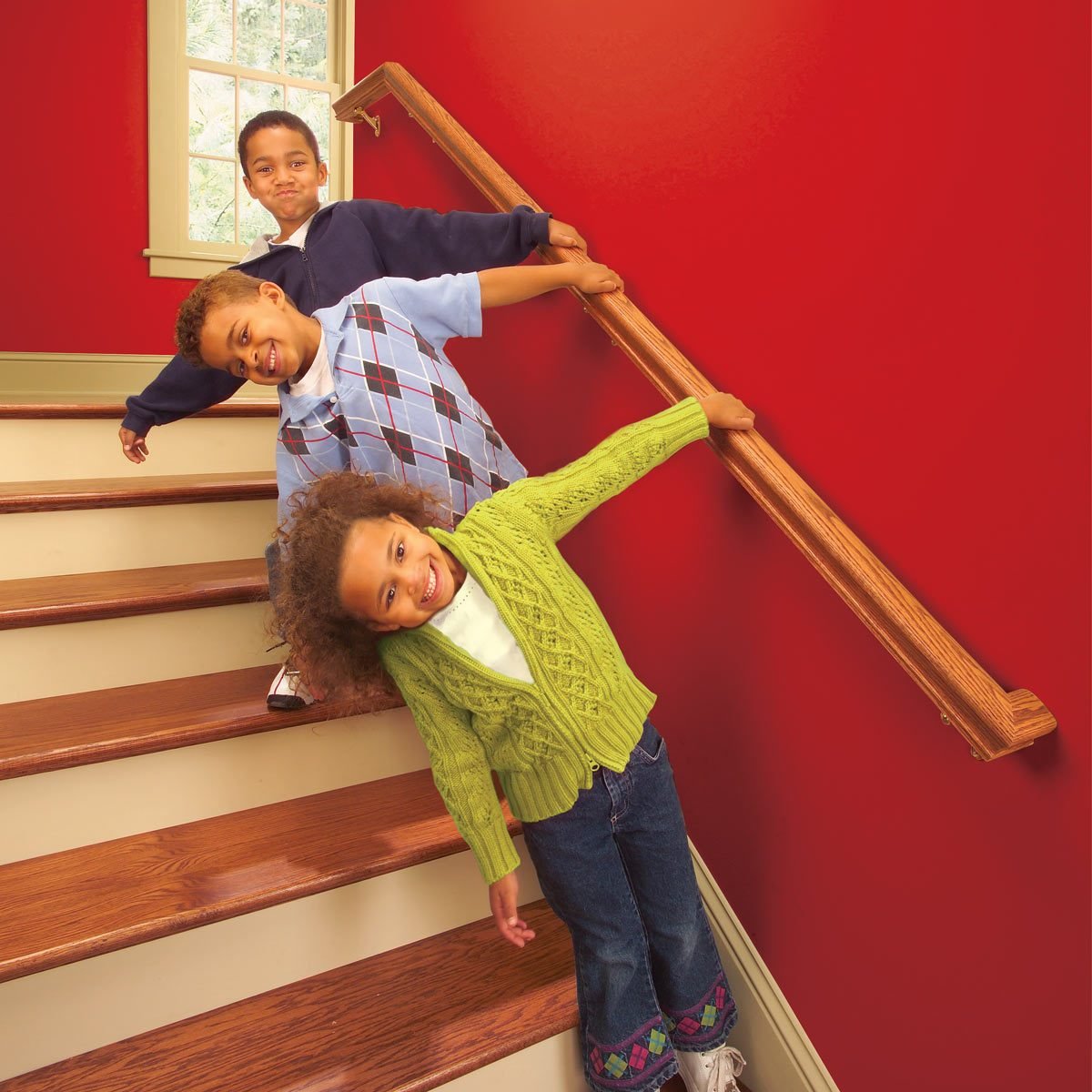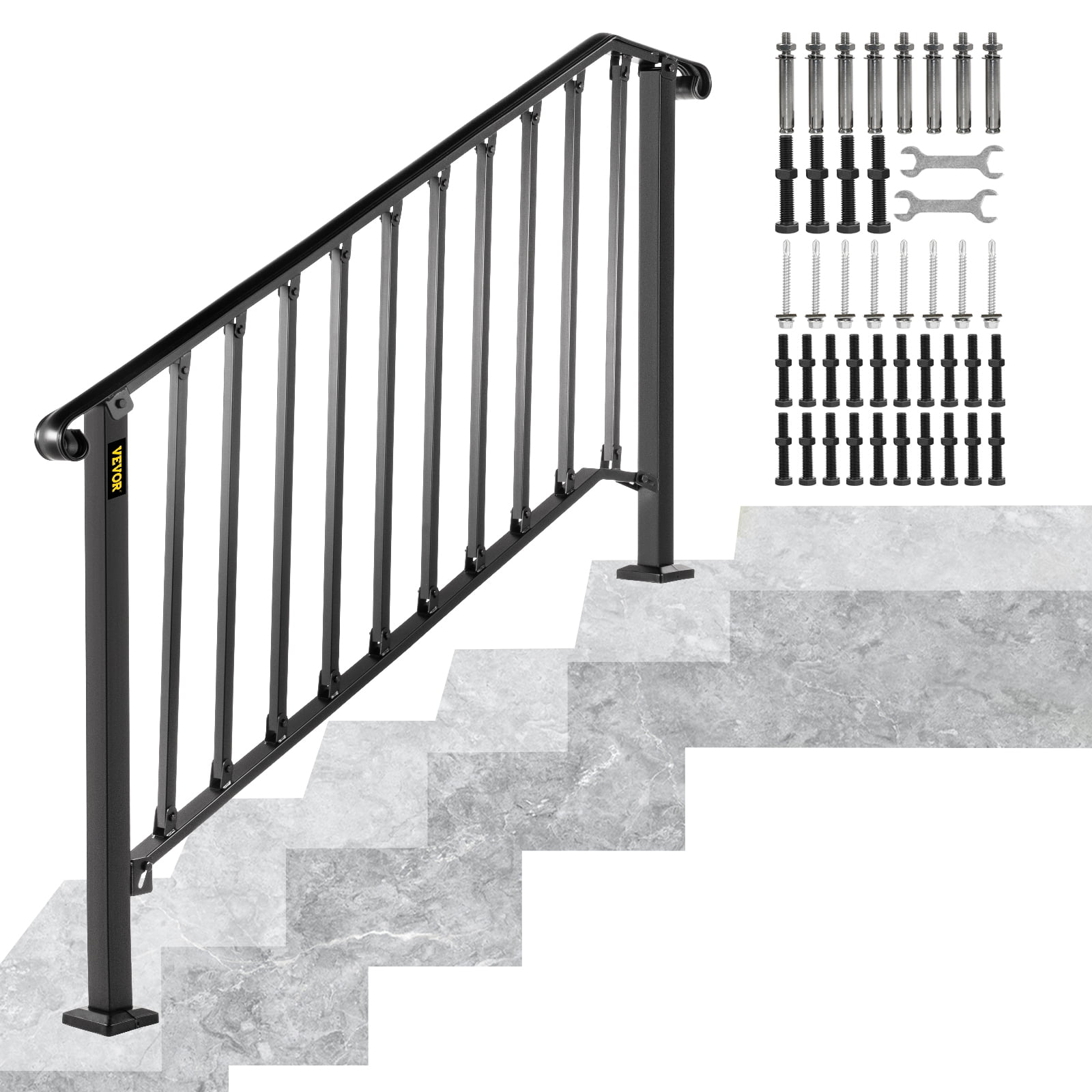Stair handrail installation is a crucial aspect of home safety and design. Whether you’re building a new staircase or updating an existing one, choosing the right handrail can enhance both the functionality and aesthetics of your space. This guide will provide you with a comprehensive overview of stair handrail installation, covering materials, methods, design considerations, and safety regulations.
From selecting the perfect handrail style to ensuring compliance with building codes, this guide has everything you need to create a safe and stylish staircase that complements your home’s interior.
Stair Handrail Installation Materials

Stair handrail installation requires careful planning and the use of appropriate materials. Having the right materials on hand ensures a safe and secure installation that meets building codes and provides optimal support.
The following materials are essential for stair handrail installation:
Handrail
- Purpose:The primary component of the handrail system, providing a stable grip for users as they ascend or descend the stairs.
- Material Options:Typically made of wood, metal, or PVC, each material offering unique aesthetic and durability characteristics.
Handrail Brackets
- Purpose:Support the handrail and distribute its weight along the wall or posts.
- Material Options:Typically made of metal, available in various shapes and sizes to accommodate different handrail designs.
Posts
- Purpose:Provide additional support for the handrail, particularly at turns or landings.
- Material Options:Can be made of wood, metal, or composite materials, offering a range of styles and strengths.
Base Plates
- Purpose:Secure the posts to the floor or landing, ensuring stability and preventing movement.
- Material Options:Usually made of metal, providing a solid foundation for the posts.
Mounting Hardware
- Purpose:Connect the various components of the handrail system, such as brackets to the wall and posts to the base plates.
- Material Options:Typically include screws, bolts, and washers, made of durable materials like stainless steel or galvanized steel.
Specialized Tools and Equipment
- Level:Ensures the handrail is installed level for proper functionality and safety.
- Measuring Tape:Accurately measures and marks distances for precise placement of components.
- Drill:Creates pilot holes for mounting hardware, ensuring secure connections.
- Screwdriver:Tightens and loosens screws during installation.
Stair Handrail Installation Methods
Installing stair handrails enhances safety and accessibility in homes and commercial buildings. Several methods are available, each with advantages and disadvantages. Understanding these methods will help you choose the best approach for your project.
Mounting to Wall Studs
This method involves attaching the handrail directly to the wall studs using lag bolts or screws. It is suitable for walls with adequate spacing between studs.
- Advantages:Strong and secure, suitable for most walls.
- Disadvantages:Requires precise stud location, may require drilling through finished walls.
- Steps:
- Locate and mark stud positions using a stud finder.
- Pre-drill holes in the handrail and studs.
- Secure the handrail using lag bolts or screws.
- Fill any gaps with caulk or wood filler.
Mounting to Handrail Brackets
Handrail brackets provide additional support by attaching the handrail to the wall without relying solely on studs. They come in various designs and materials.
- Advantages:Versatile, suitable for walls without studs, provides extra support.
- Disadvantages:May be less secure than mounting to studs, requires more drilling.
- Steps:
- Mark the bracket locations on the wall.
- Pre-drill holes for the brackets.
- Secure the brackets using screws or bolts.
- Attach the handrail to the brackets.
- Tighten the screws or bolts to secure the handrail.
Mounting to Newel Posts, Stair handrail installation
Newel posts are vertical supports installed at the bottom and top of the stairs and at each turn. Handrails can be attached to newel posts for added stability.
- Advantages:Strong and decorative, suitable for stairs with complex designs.
- Disadvantages:Requires precise installation of newel posts, may require additional materials.
- Steps:
- Install newel posts according to manufacturer’s instructions.
- Measure and cut the handrail to fit between the newel posts.
- Secure the handrail to the newel posts using screws or bolts.
- Fill any gaps with caulk or wood filler.
Stair Handrail Design Considerations

Designing a stair handrail involves careful consideration of several factors, including safety, functionality, aesthetics, and code requirements. The handrail should provide a secure and comfortable grip, while complementing the overall design of the staircase.
Choosing the Right Handrail Style
Handrail styles vary widely, from traditional wooden rails to sleek metal designs. The choice depends on the architectural style of the home, personal preferences, and budget. Common styles include:
-
-*Traditional wooden rails
Offer a classic and timeless look, available in various wood species and finishes.
-*Metal rails
Provide a modern and industrial aesthetic, available in different metals such as stainless steel, iron, or aluminum.
-*Glass rails
Create a transparent and airy feel, allowing for uninterrupted views.
-*Cable rails
Combine metal cables with posts or brackets, providing a contemporary and minimalist appearance.
Selecting the Material and Finish
The material and finish of the handrail should be durable, easy to clean, and visually appealing. Popular materials include:
-
-*Wood
Provides warmth and natural beauty, but requires regular maintenance.
-*Metal
Durable and corrosion-resistant, available in a range of finishes.
-*Glass
Offers a sleek and modern look, but can be more expensive.
-*Composite
Combines the durability of metal with the appearance of wood, low maintenance.
Design Examples
Different handrail designs can enhance the aesthetic appeal of a staircase:
-
-*Curved handrails
Provide a graceful and elegant touch, suitable for grand staircases.
-*Straight handrails
Offer a simple and functional design, perfect for modern or minimalist interiors.
-*Spiral handrails
Create a unique and eye-catching statement, suitable for curved staircases.
-*Illuminated handrails
Incorporate lighting to enhance safety and create a visually stunning effect.
Stair Handrail Safety Regulations: Stair Handrail Installation

Stair handrails are essential safety features in any building with stairs. They provide support and stability for people using the stairs, reducing the risk of falls and injuries. To ensure the safety and functionality of stair handrails, there are specific safety regulations that must be followed during their installation.
Importance of Following Safety Regulations
Adhering to safety regulations for stair handrail installation is crucial for several reasons. First and foremost, it ensures the safety of individuals using the stairs. Proper installation practices minimize the risk of accidents and injuries. Secondly, following regulations helps prevent legal liabilities for property owners or contractors responsible for the installation.
Finally, compliance with safety regulations ensures that stair handrails meet building codes and industry standards, which are essential for obtaining building permits and passing inspections.
Common Safety Violations
Common safety violations related to stair handrail installation include:
- Incorrect height:Handrails must be installed at a height that is comfortable and accessible for users. Violations occur when handrails are too high or too low.
- Insufficient support:Handrails must be securely fastened to walls or posts to provide adequate support. Violations occur when handrails are loose or unstable.
- Lack of continuity:Handrails should extend the entire length of the stairs and be continuous without any gaps. Violations occur when handrails are interrupted or have gaps that create tripping hazards.
li> Obstructions:Handrails should be free of any obstructions that could hinder their use. Violations occur when handrails are blocked by objects or have sharp edges.
Final Conclusion

By following the guidelines Artikeld in this guide, you can confidently install a stair handrail that meets both your safety and aesthetic requirements. Remember, a well-designed and installed handrail not only provides support and stability but also adds a touch of elegance to your home.
